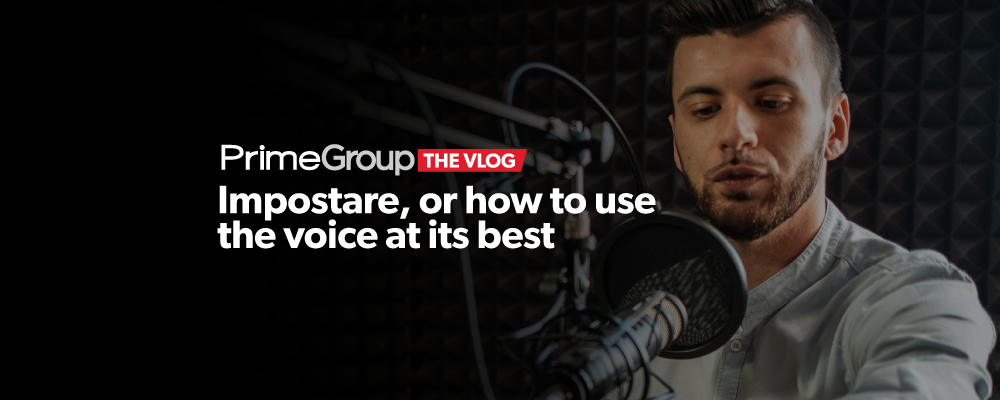Did you know that language is not only a powerful tool for communication and personal expression, but it can also be a revealing indicator of multiple aspects of an individual’s identity, including their ethnic origin, socioeconomic status, culture, age, and to some extent, their physiognomy. Let’s see below how this capacity of language to reveal so much about us is leveraged in fields such as criminology and forensic psychology, where specialists use language analysis to profile and better understand people.
Hello, I’m Constantino de Miguel. Welcome to the PrimeGroup channel.
Language and Personal Identification
Someone has said that language is like verbal DNA, it never lies. When we speak we are giving unequivocal signals of who we are. I myself, with my accent, reveal something that perhaps I myself am not able to grasp. Let’s see what our peculiar way of speaking reveals to us…
Ethnic and Cultural Origin:
Dialectal variations, accent, and vocabulary can indicate a person’s ethnic or cultural origin. For example, the use of certain specific words or phrases can reveal that someone grew up in a particular region or within a specific cultural community.
Examples:
A person who uses the term “vos” instead of “tú” for the second person singular may indicate that they are from Argentina or certain parts of Central America.
The use of “coger” with the meaning of “to take” or “to grab” may suggest that someone is from Spain, while in Argentina this term may have a sexual connotation.
The word “chamo” to refer to a young man could indicate that someone is from Venezuela, while “guagua” for bus could indicate that the person is from the Canary Islands or Cuba.
Socioeconomic Status
Word choice, sentence complexity, and mastery of formal versus informal language can give clues about a person’s educational level and socioeconomic status. Examples:
A more neutral Spanish and absence of regionalisms can indicate a person who has received formal education or is aware of the contexts in which they communicate, which can be an indicator of a certain socioeconomic level.
The use of technical or academic language, such as specialized legal or medical terms, can suggest a higher educational level.
Age
Language also changes with generations. Vocabulary, slang, and cultural references can indicate a person’s age or at least the generation they belong to. Examples:
The use of words like “alucinar” in the sense of “impress” or “freak out” may be more common in younger generations, while “órale” could be more frequent in older generations within the Mexican community.
Young people may use terms like “crush” (although it’s an anglicism) to refer to a romantic attraction, while someone older might use “suitor” or “beau.”
Physiognomy
Although more subtle, the way someone speaks can give clues about their physiognomy. For example, certain vocal characteristics can suggest approximate age, and general physical health can influence the perceived energy or vitality in someone’s voice. Example: A higher, clearer voice might suggest a younger person, while a hoarse, shaky voice might indicate someone older.
And if we look at health, it’s clear that a person with an energetic, vigorous voice can convey a sense of good health and vitality, while a weak voice might suggest the opposite.
Police Use of Language Analysis
In law enforcement, language analysis has become a valuable tool. Linguistic profiles can help authorities narrow down a list of suspects by identifying specific characteristics of an individual based on written or recorded communications. Forensic linguistics specialists examine threatening letters, social media messages, and call transcripts to identify unique speech or writing patterns that can be linked to a specific individual.
Lie Detection and Language Analysis
Lie detection through language analysis is based on the premise that lies require greater cognitive effort than the truth, reflected in linguistic complexity, pauses, evasions, and inconsistencies in the story. Experts look for changes in voice, speech rate, and the use of denials and unnecessarily complex explanations as possible indicators of deception. And if spoken language gives that away, body language can help even more. To find out if the person being questioned is lying, eight signs are usually observed:
Lip compression. This usually occurs when something negative is happening (a trial, for example). …
Covering the mouth. …
Touching the neck. …
Movement of body parts. …
When the surprise is not real. …
Rubbing the eyes. …
Touching the nose. …
Lowering or hiding the thumbs
Supporting what linguistics reveals to us, the police have at their disposal the so-called truth machines or polygraphs. They generally record variations in blood pressure, heart rate, respiratory rate, nervous stimuli and galvanic response or skin conductance, generated by certain questions asked to the subject being tested. In other words, our body also speaks for itself beyond the words we utter orally.
Integrating language analysis into the evaluation of identity and the detection of lies reflects the complexity and power of language as a window to the human psyche. While language can be manipulated to conceal the truth, it also offers countless clues that, when interpreted correctly, can reveal much more than the speaker intends. This underscores the duality of language as a reflection of personal identity and a tool in uncovering the truth in both personal and legal contexts.



